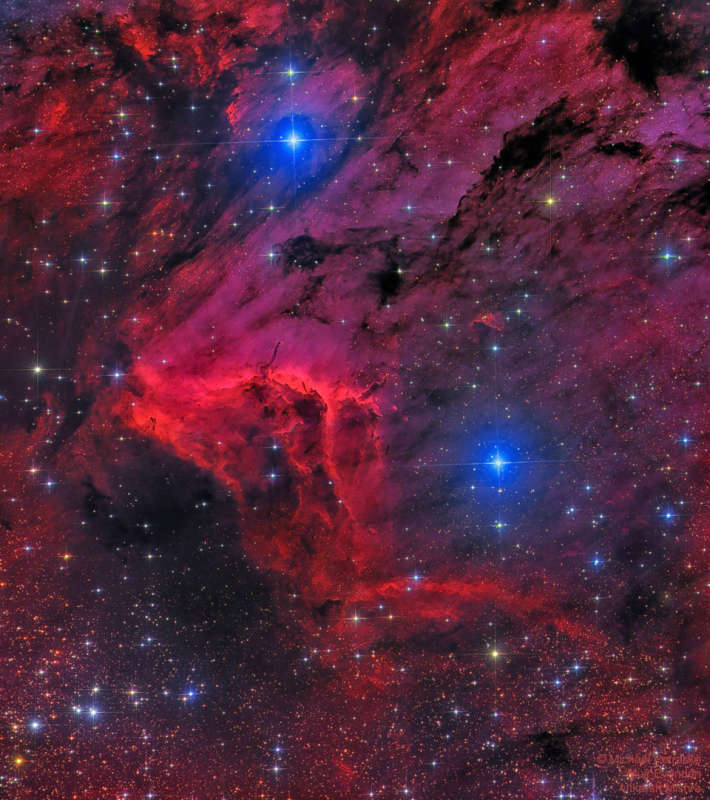
|
Credit & Copyright: M. Petrasko, M. Evenden,
U. Mishra
(Insight Obs.)
Explanation:
The Pelican Nebula is changing.
The entire nebula, officially designated IC 5070, is divided from the larger
North America Nebula by a
molecular cloud filled with dark
dust.
The
Pelican,
however, is particularly interesting because it is an unusually active mix of
star formation and evolving gas clouds.
The featured picture
was processed to bring out two main colors, red and blue, with the
red dominated by light emitted by interstellar
hydrogen.
Ultraviolet light emitted by young energetic stars is slowly
transforming cold gas in the nebula to hot gas,
with the advancing boundary
between the two, known as an
ionization front, visible in bright red
across the image center.
Particularly dense
tentacles of cold gas remain.
Millions of years from now this nebula might no longer
be known as the
Pelican,
as the balance and placement of stars and gas
will surely leave something that
appears completely different.
APOD in world languages:
Arabic,
Bulgarian,
Catalan,
Chinese (Beijing),
Chinese (Taiwan),
Croatian,
Czech,
Dutch,
Farsi,
French,
German,
Hebrew,
Indonesian,
Korean,
Montenegrin,
Polish,
Russian,
Serbian,
Slovenian,
Spanish,
Taiwanese,
Turkish,
Turkish,
and
Ukrainian
|
January February March April May June July August September October November December |
| ||||||||||||||||||||||||||||||||||||||||||||||||
NASA Web Site Statements, Warnings, and Disclaimers
NASA Official: Jay Norris. Specific rights apply.
A service of: LHEA at NASA / GSFC
& Michigan Tech. U.
Based on Astronomy Picture
Of the Day
Publications with keywords: Pelican Nebula - IC 5070
Publications with words: Pelican Nebula - IC 5070
See also:
